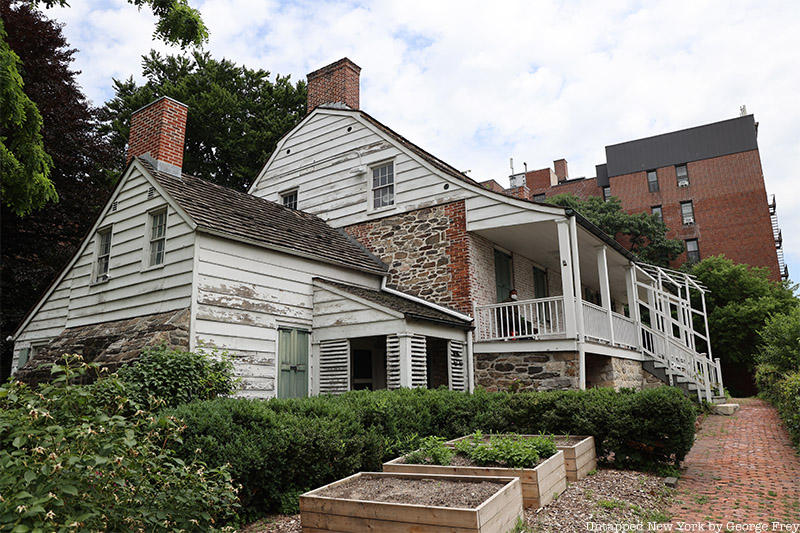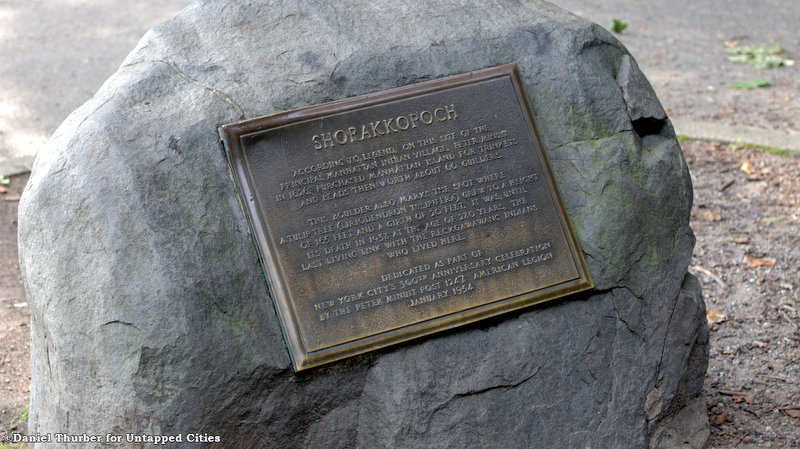
Surrounded by luscious green spaces and breathtaking waterways, Inwood serves as a tranquil and secluded enclave away from the hustle and bustle of downtown Manhattan. Interestingly, while Inwood is the northernmost neighborhood on the island of Manhattan, it is not the northernmost neighborhood in the borough of Manhattan. This distinction belongs to Marble Hill, which was isolated from Inwood after the construction of the Harlem River Ship Canal, which altered the route of the Harlem River.
Originally, Inwood’s land was home to the indigenous Lenape, who according to legend, sold Manhattan to Peter Minuit, the Director-General of New Amsterdam, right within the modern Inwood Hill Park. Later, the neighborhood would serve as a central battlefield during the American Revolutionary War, containing an encampment of more than sixty huts occupied by German Hessian troops in the British army from 201st to 204th Streets.
Through the early 20th century, Inwood remained mostly undeveloped, being home to some of the city’s last remaining farmland. Over time, the neighborhood slowly began urbanizing, though its rolling hills and lack of skyscrapers continue to give it a more relaxed atmosphere perfect for leisurely exploration. For much of the 20th century, Inwood’s population remained predominantly Irish and Jewish, but shifted to having a more predominantly Dominican population beginning in the 1980s — it currently has the highest concentration of residents of Dominican descent in New York City.
From the oldest remaining farmhouse in Manhattan to the borough’s first modular apartment building, there is much to discover in Inwood. Read on to learn more about the fascinating history and legacy of Inwood.
1. Inwood holds deep historical ties to the Lenape

Accounting for almost half of the neighborhood’s land area is Inwood Hill Park, a 196-acre all-purpose recreational and cultural space that remains as Manhattan’s last natural forest and salt marsh. Apart from a few trails, Inwood Hill Park is mostly made of thick deciduous forest that has remained untouched since the colonial days. The park is home to over 250 different species of trees and flowers, some of which cannot be found anywhere else in the borough such as the “Dutchman’s breeches” (Dicentra cucullaria).
Located within the park are a number of Native American historic sites including the Shorakkopoch Rock, which marks the putative spot where Peter Minuit purchased Manhattan from the local Lenape people for the equivalent of $24 in 1626 — though historians continue to doubt the story’s veracity. Every year, the one-day Drums Along the Hudson festival takes place inside the park, celebrating Native American culture and the historical significance of the Shorakkopoch Rock.
A few minutes away from the rock are the “Indian Caves,” which were used as shelter by the Lenapes. Despite their name, these caves are actually recesses’ among large rock formations which date back to the times of the glaciers and were rediscovered during archeological investigations at the turn of the 20th century. Arrowheads have been found in the area by locals as late as the 1950s. Besides being used for shelter, the “Indian Caves” also served as a natural water spring and were useful for their proximity to the Spuyten Duyvil Creek for fishing. Over time the creek was altered to create the Harlem River Ship Canal, widening the connection between the Hudson and Harlem rivers, with other surrounding water areas being covered to create more parkland courtesy of Robert Moses, an American public official, and creator of the modern suburbs of Long Island.





